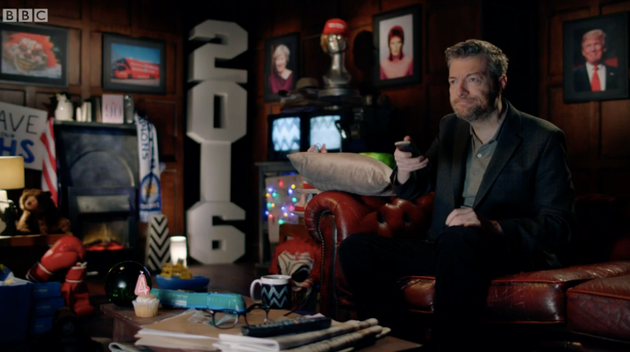What? That sounds like a slogan and you’re right, it is. Actually, it’s a good one because it elegantly sums up what preparedness is all about. But what exactly does ‘capabilities and capacities’ actually mean, why should you care and what does it have to do with preparedness? These are excellent questions. Here is a quick explainer.
In a nutshell: capability is your ability or skill to do something and your capacity is about whether you actually have the means and tools to do so.
So, how does ‘capabilities and capacities’ apply to preparedness and why should I care?
It’s all about you and what exactly happens when you are affected by an emergency or disaster. Fact is: in a real emergency or disaster, the emergency services will respond but cannot get to everyone right away. It pays to be ready and better prepared so that you are not left entirely helpless and can respond.
Preparedness is not just for professionals #WednesdayWisdom
Get a kit – make a plan – be #prepared #firesafety #healthandsafety #emergency pic.twitter.com/CBNTXxBpST— EVAQ8 Emergency Kits (@EVAQ8_news) July 5, 2017
Preparedness capabilities and capacities are about what YOU can do – YOUR skill set – and how well you can apply your skill set because of the tools and equipment you can access.
So, as you can see, the two concepts build on each another and come together. Thus the slogan ‘Preparedness is all about capabilities and capacities’ works pretty well. And there is more…
Preparedness is about being pro-active rather than just re-active. Another way of saying this is
‘Preparedness is (the capacity and capability of) bouncing forward so that you can bounce back faster’
after an emergency or disaster. It goes beyond being re-active, as for example in the RUN, TELL, HIDE advice. Sometimes you simply can’t or don’t want to do that and besides, there are many emergencies other than a weapons attack; for more along those lines see Security & Safety Update then also head to what are invacuation, lockdown and shelter-in-place and what exactly does safe self-evacuation look like? If you are involved with NGOs see Rethinking Resilience: Capacities of relief staff and volunteers in disaster zones.
But back to ‘capabilities and capacities’ and some more detail. Naturally you need real life skills such as first aid training and emergency planning for which we give you a lot of free resources at our preparedness hub.
That’s a good start but it’s actually not enough. Just imagine for a moment that you are the best trained doctor or nurse in the world but your first aid kit /emergency grab bag / crisis response kit is empty….Right, you immediately get where this is going: you need the right tools to be better prepared. Luckily you already are in the best place for just exactly that – it’s easy:
Take a look at How to build your own emergency kit and also the Survival Kit List. If you own a business or know someone who does, explore and share Business Preparedness. Check out the many standard Emergency Kit Grab Bags listed or perhaps you are after a custom-made Emergency Kit tailored specifically to you.
Get better prepared – bounce back faster: upgrade your capabilities and capacities. Start today!
Monika
For more Resilience Blog simply use the right hand navigation. For emergency kits and practical resources use the top navigation. For more on Emergency and Disaster Preparedness head over to our FREE resources at the Preparedness Hub and find out why we use humour. If you like this post, please share it to help raise awareness for Emergency and Disaster Preparedness.
Tweet thank you for sharing!
Find EVAQ8 on social media, like and follow us!
For real-life insight into professional capabilities and capacities, take a look at the BBC’s ‘Hospital’ episode 1 season 2 | London Bridge attack victims being treated at St Mary’s Hospital Paddington.


 And I’m being entirely practical, not sarcastic (and truthful) like the
And I’m being entirely practical, not sarcastic (and truthful) like the  It aims to be a guide for ‘Public Immediate Actions for multiple casualties from shooting, stabbing or a bombing’. In other words, a practical extension for everyone and following on from last year’s ‘run, tell, hide’ campaign by the government. For more on that see “
It aims to be a guide for ‘Public Immediate Actions for multiple casualties from shooting, stabbing or a bombing’. In other words, a practical extension for everyone and following on from last year’s ‘run, tell, hide’ campaign by the government. For more on that see “


 The ‘why’ is easy: it’s the law. Since 2004 under the Civil Contingency’s Act, Category 1 responders have a duty to
The ‘why’ is easy: it’s the law. Since 2004 under the Civil Contingency’s Act, Category 1 responders have a duty to  What I particularly like is the focus on capability. It implies inherent and latent capacities. It also ties neatly to preparedness which is not just about needs and liabilities but also about assets. In my view this creates an empowering shift and starting point to mobilize engagement which, given the right momentum, may overcome even learnt helplessness and apathy. Thus
What I particularly like is the focus on capability. It implies inherent and latent capacities. It also ties neatly to preparedness which is not just about needs and liabilities but also about assets. In my view this creates an empowering shift and starting point to mobilize engagement which, given the right momentum, may overcome even learnt helplessness and apathy. Thus How about you? Where do you draw your role models from?
How about you? Where do you draw your role models from? Imagination and imitation are powerful forms of learning and shape human behaviour. Throughout our lives we learn by imitating the patterns of thought and behaviour of those around us. Often we are completely unaware that we are doing such observational learning. It is not taught. Rather we simply pick it up merely by being exposed to others and the need to belong and fit in.
Imagination and imitation are powerful forms of learning and shape human behaviour. Throughout our lives we learn by imitating the patterns of thought and behaviour of those around us. Often we are completely unaware that we are doing such observational learning. It is not taught. Rather we simply pick it up merely by being exposed to others and the need to belong and fit in.
 Feeling fear is inevitable.
Feeling fear is inevitable.
 Go play, have fun – in the real world out there and away from virtual reality screens at least 90% of the time. Try completely new activities – and get good at them. Any new skill or trick you add to your toolbox will come in handy at some time in some way.
Go play, have fun – in the real world out there and away from virtual reality screens at least 90% of the time. Try completely new activities – and get good at them. Any new skill or trick you add to your toolbox will come in handy at some time in some way.
 Finding the right kind of optimism is the real challenge here. Optimism is not just one thing. It is complex and means different things to different people. Optimism is interesting because it comes in different flavours and shades. Contrary to popular belief, ‘resilient’ optimists do not view the world simply through rose-tinted-glasses. Resilient optimists acquire a certain kind or flavour of ‘realistic optimism’ that is just right – the ‘magic’ Goldilocks principle: just right.
Finding the right kind of optimism is the real challenge here. Optimism is not just one thing. It is complex and means different things to different people. Optimism is interesting because it comes in different flavours and shades. Contrary to popular belief, ‘resilient’ optimists do not view the world simply through rose-tinted-glasses. Resilient optimists acquire a certain kind or flavour of ‘realistic optimism’ that is just right – the ‘magic’ Goldilocks principle: just right. Wishing you an imaginative and inspiring weekend, and apologies if the above feels a bit like a roller-coast ride; as a mental agility exercise it was meant to be and hopefully also entertaining, thought- and action provoking. Monika
Wishing you an imaginative and inspiring weekend, and apologies if the above feels a bit like a roller-coast ride; as a mental agility exercise it was meant to be and hopefully also entertaining, thought- and action provoking. Monika 



